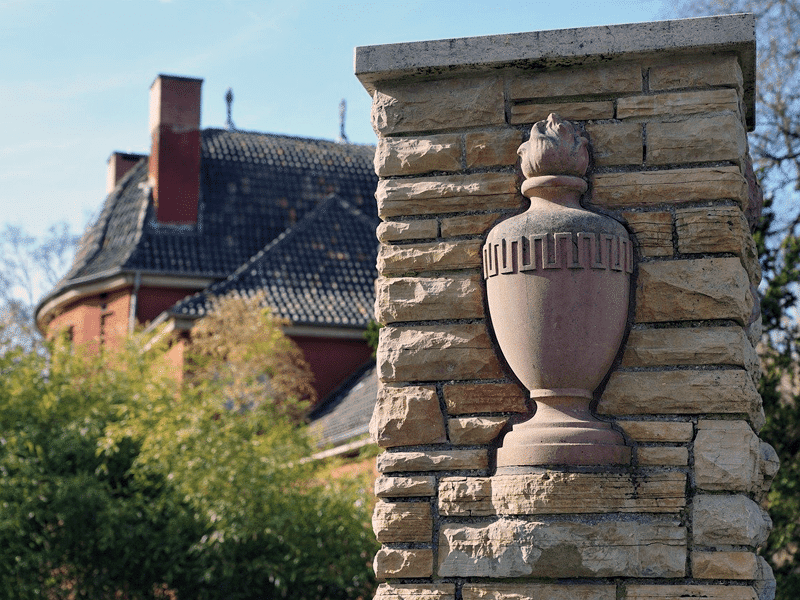Until quite recently, traditional funeral ceremonies, burial and cremation practices didn’t offer much flexibility for those wanting a ‘greener’ choice of funeral. However, with 55 million people dying every year, the environmental impact of end-of-life arrangements is substantial. Given the fact that there is a growing awareness of the need to adopt sustainable practices while we’re alive, it’s only natural to want to extend this commitment all the way through to the final journey.
The good news for those desiring green funerals is there are now plenty of options to choose from to tailor the last goodbye to the personality of the deceased while honoring their personal beliefs and environmental convictions.
Burial or cremation?
There is a widespread myth that cremation is better for the environment but this has now been fundamentally debunked. The process uses gas, a precious natural resource, while releasing carbon dioxide and harmful pollutants into the atmosphere. Did you know that a single cremation “requires about two SUV tanks’ worth of fuel”?
Encouraging natural decomposition is much less harmful to the environment, especially when an earth burial is chosen, ideally in a natural woodland burial site. Many people take great comfort in the knowledge that their loved ones are resting in a peaceful, natural setting where the cycle of life is allowed to take its course.
There are around 270 natural or woodland burial grounds in the UK. Their aim is to offer final resting places that are in tune with the environment around them. Some may only allow wooden memorial plaques that will biodegrade naturally, as well as native planting on individual plots.
Go chemical free
Traditional funeral practices include embalming the body to postpone the appearance of death, particularly if an open casket option is chosen. The embalming fluid is made from formaldehyde, a toxic preservative that will eventually leach into the ground causing contamination. While the EU is set to restrict the use of formaldehyde for embalming purposes over the next few years, a greener alternative would be simple refrigeration of the body prior to the funeral.
Chemicals may also be routinely used by the cemetery, in the form of weed killers and pesticides for landscape gardening and lawn upkeep, unless you choose a natural burial ground. And, of course, the manufacturing process of most standard coffins and caskets also involves chemicals.
Which coffin?
While there is no legal requirement to use a coffin at all – a simple woven shroud, blankets or sheets may suffice – many burial sites and most crematoria will insist on one. The vast majority of traditional coffins are made from chipboard covered with laminate but there are plenty of environmentally friendly alternatives to wood veneer, wood from unsustainable sources and exotic timbers. These range from willow, wicker, bamboo, hemp and cork to seagrass, banana leaf and even woven leaves.
Cardboard coffins made from recycled paper are also becoming increasingly popular. Sturdy, biodegradable and suitable for burials and cremations, they can be made to any design and personalized by the family of the deceased, a process that can help with the grieving process.
“We use at least 98% cardboard and paper of which 70% is recycled post-consumer waste. There are no toxic glues or formaldehyde, only corn starch glue and environmentally friendly inks. Materials are sourced in the UK and the coffins not only use 40% less material to manufacture but being lighter than the average coffin reduces the environmental impact of transportation too,” explains one eco-friendly supplier.
Tributes and memorials
You may think that floral tributes are a perfectly environmentally responsible option. Unfortunately, many floral bouquets, arrangements and wreaths are arranged with wire wraps and plastic ribbons and often come wrapped in cellophane. That’s before the carbon footprint of the (often exotic) cut flowers themselves are taken into account.
A better idea is to either make your own flower arrangements, or find a professional florist who is happy to provide environmentally friendly, plastic free tributes using locally sourced, seasonal flowers and foliage. Many families limit floral tributes to close family members, requesting charitable donations in lieu of flowers from the other mourners.
When it comes to memorial stones, don’t forget that many granite headstones are imported from as far away as China and India. What’s more, green funeral sites typically specify only biodegradable materials as memorial markers, so stone is not an option.
Choosing the right music to play at your own or a loved ones funeral to provide a fitting tribute can be very difficult. We all want to choose music which says something meaningful about the decreased, but which is also respectful of the ceremony.
Award-winning UK broker Reassured, recently carried out extensive research using Spotify’s API to establish the most popular funeral songs for millennials.
Staying local
Finally, choose a location for the funeral that is close to home to minimize the CO2 impact of the event. This also makes it possible to select a greener alternative to a standard hearse, such as a traditional horse and cart, bicycle funeral hearse or a simple wheeled bier to transport the deceased.
Using local suppliers and local venues for the funeral service and the wake afterwards helps to minimize the amount of fuel needed for everyone to get there on the day. And not only are you doing your bit to support the local business community that way, it makes it an all-round sustainable and memorable celebration of the life of someone close to you.

